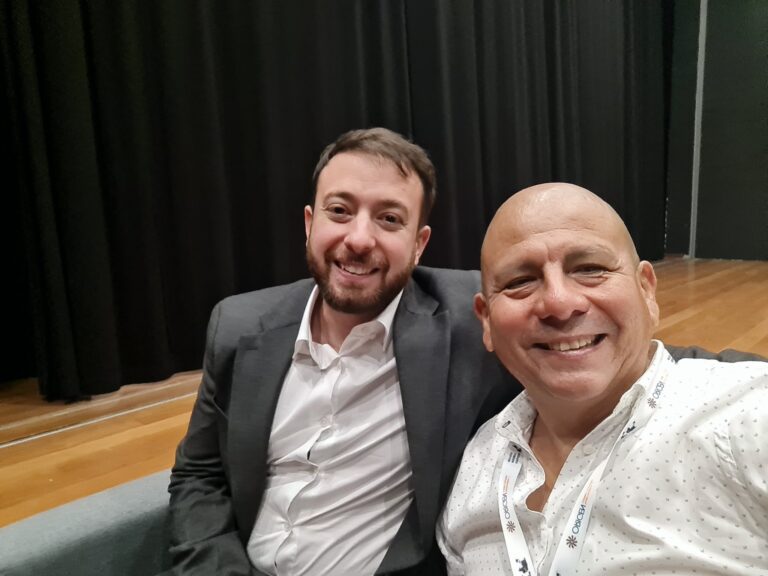June 9, 2005 Volume 7 / Number 22
Dear Colleague:
How much longer will scientists and the media be able to discount the connection between abortion and breast cancer as groups of post-abortive women and lawsuits proliferate?
Steven W. Mosher President
PRI Weekly Briefing 9 June 2005 Vol. 7 / No. 22
An Unspeakable Health Threat
With receding interest in living individual lives of metaphysical and moral goodness has come increased interest in living physically healthy lives. An endless stream of scientific reports provide bases for an even larger stream of media reports about what is healthy and what is not. Many observers have commented on the obsession with health risks that seems pervasive in contemporary media and society. Yet, almost like unpersons in some Communist dystopia, some documented health risks do not receive media coverage or much attention from doctors, and have not penetrated the average American’s psyche.
Among these unrisks are those from abortion. It should surprise no one that such a shock to a woman’s system as the artificial termination of a pregnancy–a process that so much of her body is designed to nurture–can have serious risks of negative side effects, especially when so many abortions are performed via deeply invasive surgical procedures. There are several common negative consequences of abortion (aside from psychological ones), and Dr. Joel Brind, Ph.D., has recently written another article explaining the connection between abortion and one of the most grievous and increasingly frequent: breast cancer.
In the Summer 2005 issue of the National Catholic Bioethics Quarterly, Brind writes in “The Abortion-Breast Cancer Connection” that “despite the worst efforts of scientists, doctors, politicians, journalists, and judges to quash public knowledge of the ABC link, the fact that published evidence of it abounds would make it a daunting task to convince a jury of its nonexistence, given a well-presented case. Along these lines, two recent medical malpractice cases give cause for optimism. Both were filed by young women against abortion providers for failure to warn about the risk of breast cancer and psychological complications.” One of these cases was settled, and in the other, the abortion clinic pleaded no contest-even though neither woman had breast cancer. Their failure to include breast cancer and psychological distress among the possible side effects of abortion was enough to convince these clinics to compromise.
Brind examines the studies over the past 50 years that show an ABC link and those that purportedly do not. The ABC link was first shown scientifically a half-century ago and confirmed by other studies since then, including one that the scientific establishment could not ignore. “The Daling study could hardly avoid a high profile, as it was published in the Journal of the National Cancer Institute (JNCI),” says Brind, a professor of biology and endocrinology. “The Daling team’s overall finding was of a statistically significant, 50% increase in the risk of breast cancer among women who had chosen abortion. Even the New York Times carried the story with the headline ‘New Study Links Abortions and Increase in Breast Cancer Risk.'” Other studies have found an increased risk of 30%.
That kind of increased health risk is generally considered major. And it’s even more for certain easily identifiable sub-groups of women. “The risk was far more-more than a 100% increase-for women who had an abortion prior to age 18 or after age 30,” says Brind about the Daling study. “The risk was also compounded for women who had any family history of breast cancer-even a grandmother or aunt. . . . As for women with the three risk factors combined, that is, abortion before age 18 with a positive family history of breast cancer, the relative risk was actually reported as infinite. It should be admitted that this last statistic was based on only 12 women; i.e., all 12 women who had such a reproductive and family history were found among the 845 breast cancer patients and none of them were found among the 961 healthy control women to whom they were compared.”
Groups of post-abortive women such as Silent No More are speaking out, even if the media aren’t listening. “A careful study of international literature indicates a strong correlation between abortion and breast cancer, yet abortion advocates deny these findings,” writes Georgette Forney on Silent No More’s website. “Much like tobacco companies in the past denied that cigarettes endanger the health of smokers, abortion advocates ignore research that indicates abortion increases a woman’s risk for breast cancer.”
Brind examines those studies that purport to disprove the ABC link, showing why they do no such thing. And he explains the mechanism by which induced abortion can trigger breast cancer. It is the abnormal interruption of a first pregnancy that is particularly risky, because the transformation of cells in the breasts from non-milk-producing to milk-producing is interrupted. “The completion of a full-term pregnancy provides some level of permanent protection against breast cancer, because it leaves a woman with fewer vulnerable, undifferentiated cells which can give rise to cancer. . .,” Brind explains. “The breast cell situation with induced abortion is that not only are the cells not yet differentiated, but because of the growth stimulation of pregnancy hormones–mainly estradiol–during the incomplete pregnancy, there are more of those cancer-vulnerable cells in the breasts than were there at the start of the pregnancy. Consequently, most epidemiological studies have shown higher risks in women who have had an induced abortion than in those who had not become pregnant at all.”
When a miscarriage takes place, says Brind, the hormonal situation in a woman’s body is typically different, preventing an increase in risk of breast cancer.
Currently, major health organizations including the National Cancer Institute dismiss the ABC link. “The U.S. National Cancer Institute should be criminally investigated,” says Karen Malec, president of the Coalition on Abortion/Breast Cancer.
The ABC link is not the only health concern about abortion. “Even as politically correct studies have been promulgated to neutralize the data proving the ABC link, even stronger data has emerged in recent years that firmly links abortion to premature births in subsequent pregnancies (which in turn raise the risk of breast cancer in the mother and cerebral palsy in the prematurely-born children), and to suicide and other forms of premature death in women,” Brind notes.
As those two lawsuits and the rise of groups such as the Coalition on Abortion/Breast Cancer and Silent No More indicate, the dam is beginning to break on the threats to women from abortion.
Joseph A. D’Agostino is Vice President for Communications at PRI.
To order a video on the “ABC Link” featuring Dr. Joel Brind and Dr. Angela Lanfranchi, contact PRI at www.pop.org or (540) 622-5240 ext. 205.
Silent No More’s web address is www.silentnomoreawareness.org.
A copy of Dr. Brind’s article can be found at http://www.AbortionBreastCancer.com/Brind_NCBQ.PDF.










